History
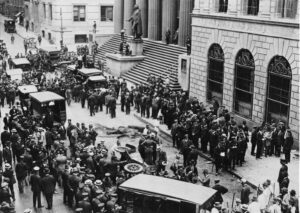
 Acts of terrorism somehow seem to be a normal possibility in the times we live in, but are they just a phenomenon that exists in our current era? Not really. While they may have been to a lesser degree, these kinds of things have been around fora long time. On September 16, 1920, during a busy day on Wall Street, New York was hit by an unforeseen event. Bankers and stockbrokers were bustling around with an average day in the financial world. Then, as the church bells struck 12 noon, 100 pounds of dynamite detonated in front of the Assay Office.
Acts of terrorism somehow seem to be a normal possibility in the times we live in, but are they just a phenomenon that exists in our current era? Not really. While they may have been to a lesser degree, these kinds of things have been around fora long time. On September 16, 1920, during a busy day on Wall Street, New York was hit by an unforeseen event. Bankers and stockbrokers were bustling around with an average day in the financial world. Then, as the church bells struck 12 noon, 100 pounds of dynamite detonated in front of the Assay Office.
Concealed in a horse-drawn wagon that had been parked for some time in front of the Assay Office, the bomb suddenly exploded. An employee of J.P. Morgan, Andrew Dunn said, “That was the loudest noise I ever heard in my life. It was enough to knock you out by itself.” The normally businesslike street was instantly transformed into what looked more like a battlefield than a financial district. There was debris, blood, and charred bodies everywhere. Thirty men and women lost their lives instantly. Eight more would die of their injuries later on. Hundreds of people were injured with many of them getting serious burns.
At the site of the 1920 Wall Street bombing, pock marks from the bomb are still visible to this day. Apparently, there was some warning of the impending attack, because a day after the attack, postal workers uncovered flyers that have been dropped into the mailboxes in Wall Street. The flyers read, “Remember, we will not tolerate any longer. Free the political prisoners, or it will be sure death for all of you.” It was signed the American Anarchist Fighters. Authorities immediately suspected the Galleanists, a gang of anti-government Italian anarchists led by Luigi Galleani, but unfortunately, they could not uncover any evidence to charge them with the crime. While the FBI had numerous leads, they couldn’t come close to any significant evidence. The investigation went on for years and was finally delegated a cold cast with the last known investigation taking 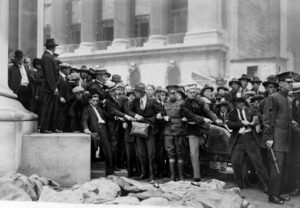
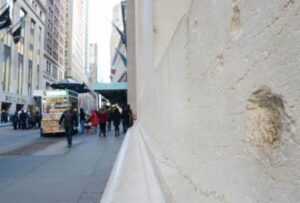 place in 1944. Finally, the FBI concluded that the explosion was most likely caused by “Italian anarchists or Italian terrorists.” Nevertheless, they could not prove anything, and no one was ever charged with the crime. Mario Buda, a Galleanist, was considered as a likely suspect, but with no proof, he was never charged. No one has ever claimed responsibility for the attack even after 102 years.
place in 1944. Finally, the FBI concluded that the explosion was most likely caused by “Italian anarchists or Italian terrorists.” Nevertheless, they could not prove anything, and no one was ever charged with the crime. Mario Buda, a Galleanist, was considered as a likely suspect, but with no proof, he was never charged. No one has ever claimed responsibility for the attack even after 102 years.
![]()
 When a couple gets married, the most common tradition is that the woman takes her husband’s last name. There are exceptions, of course, and the woman isn’t obligated to take her husband’s last name, but when she does, she should have a reasonable expectation that she will no longer be known by her maiden name. With that in mind, I wonder if the media shouldn’t consider that they are being rude and disrespectful when they refer to Princess Catherine of Wales, as Kate Middleton.
When a couple gets married, the most common tradition is that the woman takes her husband’s last name. There are exceptions, of course, and the woman isn’t obligated to take her husband’s last name, but when she does, she should have a reasonable expectation that she will no longer be known by her maiden name. With that in mind, I wonder if the media shouldn’t consider that they are being rude and disrespectful when they refer to Princess Catherine of Wales, as Kate Middleton.
If they think they are clarifying exactly who they are talking about, I hate to tell them that after eleven years of marriage and near constant public appearances and charity work, we all know who she is. Now is the time to stop the disrespect they have been showing her for all these years and start showing her the respect she has certainly earned. I know that many people in the United States 
 don’t really care about the royal family, but since Prince William is my twelfth cousin thrice removed, it does interest me. Princess Catherine, in her own right, has endeared herself to many people around the world, so I really don’t understand why some people think it is okay to continue to call her by her maiden name, minus her titles. No one ever considered calling Princess Diana, Diana Spencer, so why is it okay to call Princess Catherine, Kate Middleton? It just isn’t!! In fact, no one even considered calling the now, Queen Consort, Camilla, by her name. She immediately became Camilla, the Duchess of Cornwall. And in fact, it was her choice that she not be called Camilla, Princess of Wales. Why were her wishes honored and not those of Princess Catherine, who surely doesn’t still want to go by her maiden name eleven years after her marriage.
don’t really care about the royal family, but since Prince William is my twelfth cousin thrice removed, it does interest me. Princess Catherine, in her own right, has endeared herself to many people around the world, so I really don’t understand why some people think it is okay to continue to call her by her maiden name, minus her titles. No one ever considered calling Princess Diana, Diana Spencer, so why is it okay to call Princess Catherine, Kate Middleton? It just isn’t!! In fact, no one even considered calling the now, Queen Consort, Camilla, by her name. She immediately became Camilla, the Duchess of Cornwall. And in fact, it was her choice that she not be called Camilla, Princess of Wales. Why were her wishes honored and not those of Princess Catherine, who surely doesn’t still want to go by her maiden name eleven years after her marriage.
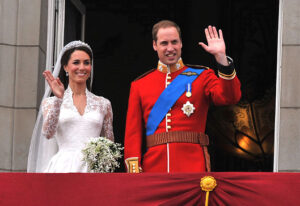 A few of the Facebook groups I am a member of have discussed this at length, so I know that many people out there agree with me on this. Princess Catherine has never expressed a desire to be called Kate Middleton either. Usually when a woman chooses to keep her maiden name, it is made public knowledge to…at the very least, avoid confusion. That was never said of Princess Catherine, so why does the media, and some in the public sector, insist on using her maiden name. The only thing that makes any sense to me is that it is a show of disrespect for her title, and in my opinion, that is as wrong as it can be. So, I say start using her correct name, with her title…and I say, it’s high time!!
A few of the Facebook groups I am a member of have discussed this at length, so I know that many people out there agree with me on this. Princess Catherine has never expressed a desire to be called Kate Middleton either. Usually when a woman chooses to keep her maiden name, it is made public knowledge to…at the very least, avoid confusion. That was never said of Princess Catherine, so why does the media, and some in the public sector, insist on using her maiden name. The only thing that makes any sense to me is that it is a show of disrespect for her title, and in my opinion, that is as wrong as it can be. So, I say start using her correct name, with her title…and I say, it’s high time!!
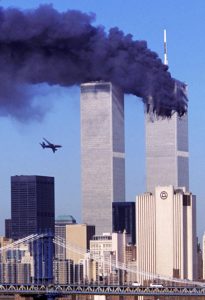
 Looking back to September 10, 2001, it seemed that all was right with the world, but in fact, it was not, as we would all find out the very next morning. There were warning signs that terrorists were plotting something, but then weren’t they always. That’s what terrorists do…plot evil, plan to kill as many people as possible, and plan to bring a greater measure of fear into the world. September 11, 2001 would be no different. When 19 al Qaeda militants, hijacked 4 US airliners that morning, the terror had begun. In years past, a hijacked plane was used to take the hijackers to some other country, preferably one without extradition. The passengers were told that this was going to be a hijacking like that, but when the terrorists began slashing people with box cutters, and took over the cockpit, the people knew that this was not a normal hijacking. We all know far too well what the end result of this horrific act of brutal terrorism was.
Looking back to September 10, 2001, it seemed that all was right with the world, but in fact, it was not, as we would all find out the very next morning. There were warning signs that terrorists were plotting something, but then weren’t they always. That’s what terrorists do…plot evil, plan to kill as many people as possible, and plan to bring a greater measure of fear into the world. September 11, 2001 would be no different. When 19 al Qaeda militants, hijacked 4 US airliners that morning, the terror had begun. In years past, a hijacked plane was used to take the hijackers to some other country, preferably one without extradition. The passengers were told that this was going to be a hijacking like that, but when the terrorists began slashing people with box cutters, and took over the cockpit, the people knew that this was not a normal hijacking. We all know far too well what the end result of this horrific act of brutal terrorism was.
In all, 2996 people, including the 19 terrorists, lost their lives at four locations that day. Of those 2996 people, only 291 bodies were found intact. A total of 21,906 body parts were found, and 1717 families got no remains at all. In addition, 25,000 more people were injured, and a large number of them have died of 9-11 related illnesses since then. The smoke and debris that came out of the burning jet fuel and buildings was so toxic, and 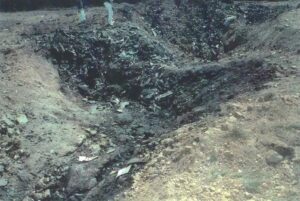
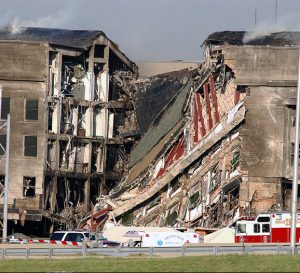 those who helped with the searches and cleanup were exposed. It was a deadly combination. No one knew, or if they did, they disregarded the danger, in an effort to save lives. A few lives were saved. A few people were pulled out of the buildings alive. Theirs was a miracle, and they knew that for the rest of their lives, they would be a walking miracle. Of course, they would also most likely feel some degree of survivor’s guilt, although they shouldn’t. Nevertheless, it is a natural phenomenon, that people tend to struggle with for years, if not the rest of their lives. It never leaves.
those who helped with the searches and cleanup were exposed. It was a deadly combination. No one knew, or if they did, they disregarded the danger, in an effort to save lives. A few lives were saved. A few people were pulled out of the buildings alive. Theirs was a miracle, and they knew that for the rest of their lives, they would be a walking miracle. Of course, they would also most likely feel some degree of survivor’s guilt, although they shouldn’t. Nevertheless, it is a natural phenomenon, that people tend to struggle with for years, if not the rest of their lives. It never leaves.
For those who lost loved ones on that horrible day, it goes without saying that they will never forget, but the reality is that no one should ever forget. How could we forget, when we see that pictures of the planes going into the towers, or the walls of the Pentagon destroyed, or the massive hole in the Pennsylvania earth. Those aren’t just pictures…they are lives. They are lives lost, and families forever changed. They are children who will grow up without parents, people who with grow old without the spouse they had planned to have with them. 
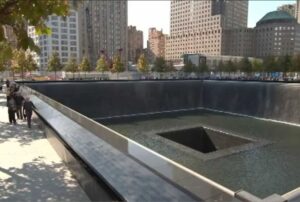 They are sons and daughters, whose lives were stolen from them…whose promise was snuffed out before it could be fulfilled. For all of those people…it is our duty to “never forget!!” Our nation lost the feeling of safety that we had before. We don’t trust those we don’t know as much as we used to. We will always be forever changed. Never forget that!! Ever!!
They are sons and daughters, whose lives were stolen from them…whose promise was snuffed out before it could be fulfilled. For all of those people…it is our duty to “never forget!!” Our nation lost the feeling of safety that we had before. We don’t trust those we don’t know as much as we used to. We will always be forever changed. Never forget that!! Ever!!
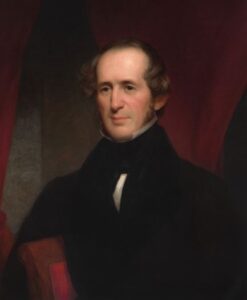
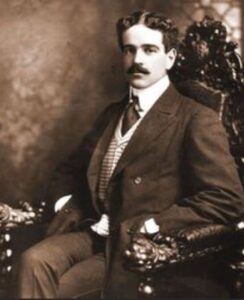 Like it or not, people are put into classes based on their income, and as we know, the elite are the very rich ones. Most people fall into the middle class, with a large group of people being in the poverty level. Many of the people in these classes spend their time working hard and sometimes living paycheck to paycheck, just trying to make ends meet. While those people are doing their best to survive, the very wealthy, also known as the Elite Class spend their time doing their very best to outdo each other. What a headache that must be.
Like it or not, people are put into classes based on their income, and as we know, the elite are the very rich ones. Most people fall into the middle class, with a large group of people being in the poverty level. Many of the people in these classes spend their time working hard and sometimes living paycheck to paycheck, just trying to make ends meet. While those people are doing their best to survive, the very wealthy, also known as the Elite Class spend their time doing their very best to outdo each other. What a headache that must be.
During the Gilded Age, the Elite Class was in a particularly fierce fight for supremacy, not in politics or world economy issues, but rather in extravagancy. The Gilded Age took place from the 1870s to about the 1900s. During that time the Elite Class was building great estates with elegantly designed homes…trying to outdo each other while most Americans and Europeans struggled just to make basic ends meet. The Gilded Age elite struggled with one another, competing over who had the biggest, the most, the best…of any and everything. Anything that was outlandish, wild, shocking, or just plain spendy, was fair game in their “struggle.” The biggest source of extravagance was in their homes. Newport, Rhode Island, was prime real estate for the 19th-century one-percenters. Cornelius Vanderbilt constructed his famous 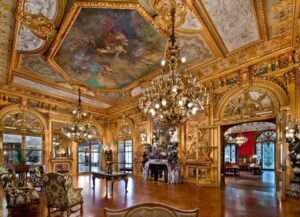
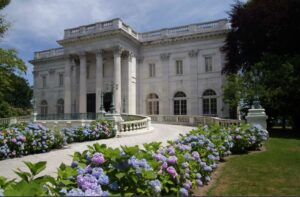 home, The Breakers, it was an attempt to one-up his brother, William K Vanderbilt’s latest showplace, Marble House, designed and planned by William K Vanderbilt to “outstaff, outdress, and outparty” his brother and other Gilded Age gents.
home, The Breakers, it was an attempt to one-up his brother, William K Vanderbilt’s latest showplace, Marble House, designed and planned by William K Vanderbilt to “outstaff, outdress, and outparty” his brother and other Gilded Age gents.
The whole production among the elites grew so fierce that home construction was covered in the local newspapers…on a daily basis!! The Newport Mercury reported that Marble House had 500,000 cubic feet of imported marble, as well as paneled walls portraying gods from the Classical age. Some walls were even coated in 22-carat gold leaf, all of it painstakingly applied by hand…not William K’s hand mind you. The latter Vanderbilt couldn’t sully his hands with the work of the common man. That was what his money was for…to underpay the common worker to build the elaborate house.
Yes, the whole age really was ridiculously extreme, but there was actually an ancient precedent that the Gilded Age families simply followed. Just take a look at the surviving Roman villas, the Versailles palace in France, and 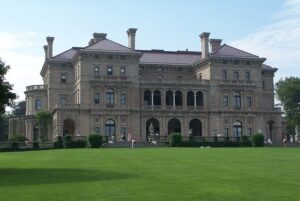
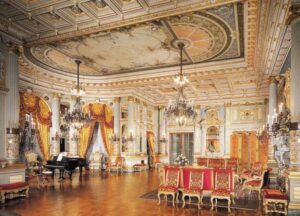 the Catherine Palace in Saint Petersburg, Russia. The rich and powerful have always felt compelled to put their wealth on display. They did it to show other powerful people that they could keep up with the rest, and to challenge them to take the game to the next level…a challenge they happily accepted. It was a wild time, and in many places around the world, the game continues.
the Catherine Palace in Saint Petersburg, Russia. The rich and powerful have always felt compelled to put their wealth on display. They did it to show other powerful people that they could keep up with the rest, and to challenge them to take the game to the next level…a challenge they happily accepted. It was a wild time, and in many places around the world, the game continues.
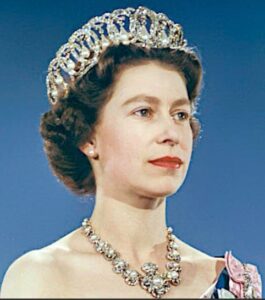
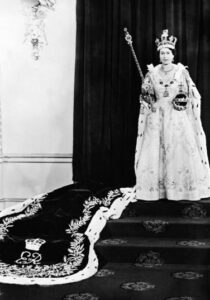 Sad news has surfaced today out of Scottland, as Queen Elizabeth of England has passed away at the age of 96 years. She became the Queen of England in 1952 at the very young age of 25, when her father, King George VI passed away on February 6, 1952, at just 56 years old. Queen Elizabeth would later become the longest reigning British monarch in history, reigning for 7 decades. The queen celebrated her Platinum Jubilee (70 years as reigning monarch) on February 5, 2022. She knew that her time was short, and she spoke of her wishes for the time following her death. Now that time has come.
Sad news has surfaced today out of Scottland, as Queen Elizabeth of England has passed away at the age of 96 years. She became the Queen of England in 1952 at the very young age of 25, when her father, King George VI passed away on February 6, 1952, at just 56 years old. Queen Elizabeth would later become the longest reigning British monarch in history, reigning for 7 decades. The queen celebrated her Platinum Jubilee (70 years as reigning monarch) on February 5, 2022. She knew that her time was short, and she spoke of her wishes for the time following her death. Now that time has come.
The family will not have to make any arrangements for her funeral, because everything has already been planned from the service to the grave, and even the timeframe. The only unknown, until now, was the date of the service, which will be held eleven days after her passing…on September 19, 2022. I think it is comforting when the deceased has already planned their own funeral. It is to their tastes and preferences, and there is no question 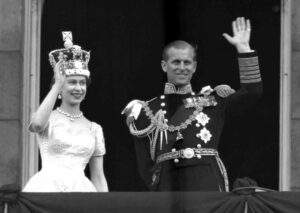 as to their wishes. Queen Elizabeth’s funeral will be televised across the world, with the only restriction being that the royal family is not to be filmed. That makes sense. They need to be able to grieve privately.
as to their wishes. Queen Elizabeth’s funeral will be televised across the world, with the only restriction being that the royal family is not to be filmed. That makes sense. They need to be able to grieve privately.
The royal line of succession now changes, with Prince Charles becoming King Charles III (it was announced earlier). He has the right to change his name, but it appears that he won’t. Prince William is now first in line to the throne and takes on his father’s title of Prince of Wales. Duchess Camilla becomes Queen Consort, and Duchess Catherine becomes Princess of Wales. Prince George is second in line to the throne, followed by Princess Charlotte and Prince Louis. It is so strange to think of so many changes happening all at once, but that is how things work in the world of the monarchy. How people feel personally about any part of the changes really doesn’t matter, because they are what they are.

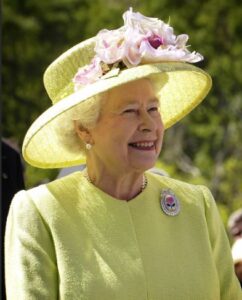 For the world, this is a sad day. It is the end of an era. Many people, including me, have never known a time when Queen Elizabeth II was not the queen. She began her reign four years before I was born. Queen Elizabeth II was much loved and well respected. She had a way of making people feel at ease. She had a very human type of nature, and really never presented herself as anything so special. She went out and shook the hands of the people, in what was deemed a “walkabout” like the Australians do. She considered her office one of service to the people, rather than a ruler over them. I’m sure that is why she was so loved by all. The end of her reign has brought much sadness to the world. Rest in peace Queen Elizabeth. You will be missed by so many people.
For the world, this is a sad day. It is the end of an era. Many people, including me, have never known a time when Queen Elizabeth II was not the queen. She began her reign four years before I was born. Queen Elizabeth II was much loved and well respected. She had a way of making people feel at ease. She had a very human type of nature, and really never presented herself as anything so special. She went out and shook the hands of the people, in what was deemed a “walkabout” like the Australians do. She considered her office one of service to the people, rather than a ruler over them. I’m sure that is why she was so loved by all. The end of her reign has brought much sadness to the world. Rest in peace Queen Elizabeth. You will be missed by so many people.
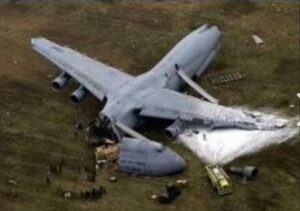 I don’t personally believe in luck, but some people have an uncanny knack for being in the wrong place at the wrong time. Frane Selak, a native Croatian, was one of those people. In 1962, he was traveling from Sarajevo to Dubrovnik by train, when the train derailed in a canyon. The night was rainy and cold, and when the train derailed, it plummeted into the Neretva River. When Selak came to himself, he found that he was surrounded by water. Selak was pulled to safety by an unknown passenger, but 17 people died in the accident.
I don’t personally believe in luck, but some people have an uncanny knack for being in the wrong place at the wrong time. Frane Selak, a native Croatian, was one of those people. In 1962, he was traveling from Sarajevo to Dubrovnik by train, when the train derailed in a canyon. The night was rainy and cold, and when the train derailed, it plummeted into the Neretva River. When Selak came to himself, he found that he was surrounded by water. Selak was pulled to safety by an unknown passenger, but 17 people died in the accident.
Selak recovered from his injuries on the train and a year later, Selak took a trip from Zagreb to Rijeka, by plane to visit his ailing mother. The trip was last minute, and the flight was full. He talked the flight attendant into letting him sit in the back by her. Suddenly, one of the doors flew open. The flight attendant was immediately sucked out of the aircraft, followed 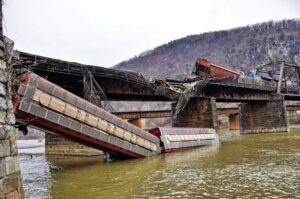 a second later by Selak who somehow landed in a haystack on the ground. The plane crashed moments later. Stories vary, but it is said that the crash killed 19 or 20 people.
a second later by Selak who somehow landed in a haystack on the ground. The plane crashed moments later. Stories vary, but it is said that the crash killed 19 or 20 people.
You would think that somehow, that would be the end of Selak’s close calls, but you would be wrong. Things were going pretty well for about 22 accident-free years, but then in 1995, came Selak’s story of survival after being hit by a bus while walking in Zagreb. The following year, Selak claimed that while driving in the Croatian mountains an oncoming truck caused him to swerve off a 300-foot cliff. However, he said that he was “able to jump out at the last second and watch from a tree at the cliff’s edge as his car plummeted downward.” Are the tales outrageous? Yes, but they have not been disputed by doctors, hospitals, or police, so who knows. If they 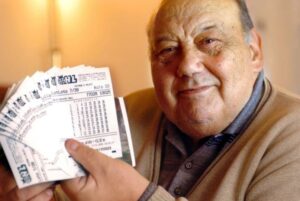 were true stories, it seems amazing to me that he didn’t become a recluse!! Still, there is no guarantee that he would have been any safer in his case. A man who had been in so many crashes, even though he survived, is at much greater risk of dying in the next one…right?
were true stories, it seems amazing to me that he didn’t become a recluse!! Still, there is no guarantee that he would have been any safer in his case. A man who had been in so many crashes, even though he survived, is at much greater risk of dying in the next one…right?
Finally, after years of close calls, when Selak was 74 years old…something changed. Selak won the lottery!! It seemed that his bad streak had turned to a good streak. The year was 2002, and Selak won more than six million Croatian Kuna, which amounted to just under 1.2 million US dollars.
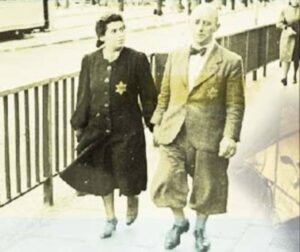
 Like the week in 1941, that changed the lives of Jewish people everywhere and set in motion the most horrific mass bullying and murders in history, our own government has also been trying to force mandates and executive orders on us too. You might say that the mandates of today are not nearly as bad as the Holocaust years, and I would say that you are right, they aren’t as bad…yet!! That horrific week for the Jewish people started on September 1, 1941, when the German Government ordered that all Jews in Germany over six-years-old must wear the Judenstern…a Star of David that was colored yellow and inscribed Jude (Jew) in mock-Hebrew lettering. The action was designed to humiliate, bully, and later set up mass killings of an entire race of people, and it was ordered by one of the most evil people that ever walked the face of the earth…Adolf Hitler. The supposed mark of shame would, in postwar years, become a symbol of the horrific persecution and the Holocaust.
Like the week in 1941, that changed the lives of Jewish people everywhere and set in motion the most horrific mass bullying and murders in history, our own government has also been trying to force mandates and executive orders on us too. You might say that the mandates of today are not nearly as bad as the Holocaust years, and I would say that you are right, they aren’t as bad…yet!! That horrific week for the Jewish people started on September 1, 1941, when the German Government ordered that all Jews in Germany over six-years-old must wear the Judenstern…a Star of David that was colored yellow and inscribed Jude (Jew) in mock-Hebrew lettering. The action was designed to humiliate, bully, and later set up mass killings of an entire race of people, and it was ordered by one of the most evil people that ever walked the face of the earth…Adolf Hitler. The supposed mark of shame would, in postwar years, become a symbol of the horrific persecution and the Holocaust.
Throughout history, the Jewish people have been persecuted and forced to distinguish themselves in similar ways. Prior to September 1st, the Nazis had already demanded that Jews in the East, including Poland, wear the Star of David. The only difference was that in Poland the stars were colored blue instead of yellow. The rest of the bullying, humiliation, and hatred were the same. Still, as with any brutal treatment of a group of people, not everyone agreed with this horrific practice and ordinance. In fact, the Yellow Star Law was very unpopular with the average German citizens, and many of them would tip their hat as a show of respect to the Jewish people as they passed them in the street. Of course, the Nazis couldn’t allow that to continue, and the German authorities quickly forbade the practice of hat tipping, because it was a defiance of their law. The Occupied Zone of France, stalled the law until June of 1942, and Vichy never put it in place even though they were very proactive in persecuting Jews in the Free Zone.
The Yellow Star Law basically made it legal for millions of Jews to be bullied, beaten, and murdered…by any means, and all without any form of punishment for it. That sounds much like the present day (although now over with) Mask Mandates of today. In what was just the beginning of the horror, The Yellow Star Law gave the 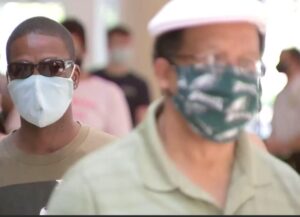
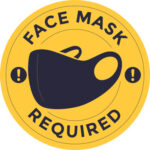 German Army the right to kill a Jew in broad daylight, with witnesses, and no punishment. The Jewish people couldn’t own property, have a business, or even own a home and its contents. They were moved into ghettos and their property was stolen from them. In modern days, we often look at this kind of practice as not possible, but if we don’t watch our government closely, we may find ourselves in very much the “same boat” as the Jewish people of the Holocaust years. Be aware…be very aware.
German Army the right to kill a Jew in broad daylight, with witnesses, and no punishment. The Jewish people couldn’t own property, have a business, or even own a home and its contents. They were moved into ghettos and their property was stolen from them. In modern days, we often look at this kind of practice as not possible, but if we don’t watch our government closely, we may find ourselves in very much the “same boat” as the Jewish people of the Holocaust years. Be aware…be very aware.

 With so much technology these days, the things that we used to do the old-fashioned way have begun to get lost in the annals of time. Some things, it seems to me would fall into the category of “good riddance,” while others fall into the category of “how sad.” I know that many people would disagree with me, but I have very little use for old-fashioned books. I know that is an odd one, but once you have read the book, how many people will go back and read it again…even the classics. Maybe a few people will, but with so many books to read, most will not. That is why e-books and audible books make perfect sense to me.
With so much technology these days, the things that we used to do the old-fashioned way have begun to get lost in the annals of time. Some things, it seems to me would fall into the category of “good riddance,” while others fall into the category of “how sad.” I know that many people would disagree with me, but I have very little use for old-fashioned books. I know that is an odd one, but once you have read the book, how many people will go back and read it again…even the classics. Maybe a few people will, but with so many books to read, most will not. That is why e-books and audible books make perfect sense to me.
A physical calendar is another thing that seems unnecessary to me, although I do like the pictures many of them have. The thing is that writing your schedule on a physical calendar is only helpful if you are where the calendar is. You might suggest a daily planner, but that still requires you to look at it periodically, and let’s face it. Time flies, especially during the workday. If you forget to look at that calendar, you miss your appointment.  The calendar on your phone, which as we all know is always with you, comes with a reminder that alerts you when it’s time to go to your appointment. Life is hectic, and I just don’t need the added stress of missing appointments, even now that I’m retired.
The calendar on your phone, which as we all know is always with you, comes with a reminder that alerts you when it’s time to go to your appointment. Life is hectic, and I just don’t need the added stress of missing appointments, even now that I’m retired.
I have gone shopping with a paper list, and I’m sure you have too. I have also gone to the store and forgotten my list. Then I spent my who shopping experience trying to remember what was on my list. I’ll be honest I don’t always shop with a list of any kind, but when I really need to remember something, a list is essential. Once again, I go back to my phone, because there is a note app on my phone, and you can even get an app specifically for groceries. That’s where I put the really important things, because I always have my phone with me…don’t you? You do, because really…nobody has a landline anymore.
While my dear uncle, Bill Spencer always wanted to get a letter from his loved ones, and I can totally understand why, after looking at some of the letters from my dad to his mom, from my uncle to me, and from ancestors I never met to other ancestors I never met. The point is, as my uncle put it that you can actually see their handwriting. That is truly a precious thing to have. I suppose that if I have one “old-fashioned” thing that 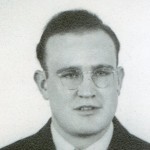
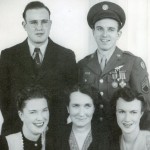
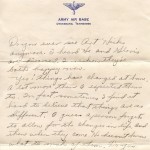 I could go both ways with letters would be that thing. Those handwritten letters are precious, but daily communication received quickly via text, messenger, or snap chat are very important to me too. When you have children who live far away, or as we all do, children who are very busy, those quick little messages are a great treasure. I think I will always treasure both.
I could go both ways with letters would be that thing. Those handwritten letters are precious, but daily communication received quickly via text, messenger, or snap chat are very important to me too. When you have children who live far away, or as we all do, children who are very busy, those quick little messages are a great treasure. I think I will always treasure both.
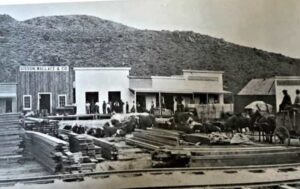
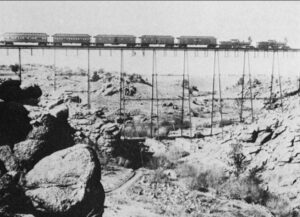 When the Transcontinental Railroad opened in 1869, the people in the east finally had the chance to take a trip into the Wild West without having to move there or plan on spending months there visiting family. I can imagine that there were mixed emotions involved as they headed out. The Western dime novels had told of wild Indians, gunslingers, bank robberies, and of course, train robberies. It was almost enough to make them question the sanity of their intended trip into the wild, but nevertheless, they went.
When the Transcontinental Railroad opened in 1869, the people in the east finally had the chance to take a trip into the Wild West without having to move there or plan on spending months there visiting family. I can imagine that there were mixed emotions involved as they headed out. The Western dime novels had told of wild Indians, gunslingers, bank robberies, and of course, train robberies. It was almost enough to make them question the sanity of their intended trip into the wild, but nevertheless, they went.
One of the great misconceptions of the Wild West is that it maybe wasn’t quite as wild as the Easterners had been told. In fact, the town of Palisade, Nevada, a state notoriously known for its wildness these days, like many other Wild West towns of the time, was actually very peaceful. In fact, the town had so few crimes that it didn’t even have an official sheriff. So, when the train began running through Palisade, and the train conductor 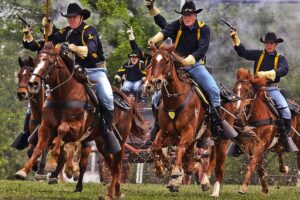 told the townspeople that railroad passengers were often disappointed at how these quiet towns were so different from how they were portrayed in the Western dime novels, he people of Palisade decided that something had to be done.
told the townspeople that railroad passengers were often disappointed at how these quiet towns were so different from how they were portrayed in the Western dime novels, he people of Palisade decided that something had to be done.
The townspeople, with the full knowledge and approval of the citizens of the town, the US Cavalry, and even a local Indian tribe, staged Western-style shootouts in the street, bank robberies, Indian battles, and whatever else they could think of. The whole purpose was to provide entertainment for the passing railroad travelers. After the train passed, life in the small town went back to its “dull, quiet, and peaceful” normal. I don’t know if the purpose was to bring in more tourists, to save face when it came to the Western dime novels, or maybe just to have a good laugh at the expense of the city-slickers. The reality is that many of the people back east, at that time, felt like their way of life was better than the “craziness” of the Wild West, and that to go have a look was a way of not only entertaining themselves, but also to prove that the West could not possibly be a peaceful place to live. Of course, while things could be violent and wild in the old West, it wasn’t always that 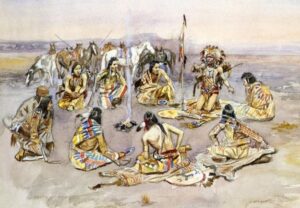
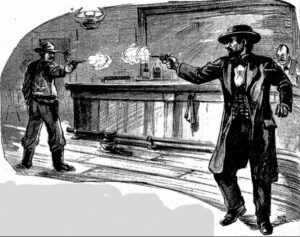 way. It’s also a possibility that the people had moved to the West wanted the people in the East to think that the West was a wild place, full of adventure. It was the whole purpose for going west anyway, wasn’t it…to find that adventure? Yes, that was the purpose for the move to the West. And that purpose had to be protected, by any means necessary…even theater.
way. It’s also a possibility that the people had moved to the West wanted the people in the East to think that the West was a wild place, full of adventure. It was the whole purpose for going west anyway, wasn’t it…to find that adventure? Yes, that was the purpose for the move to the West. And that purpose had to be protected, by any means necessary…even theater.
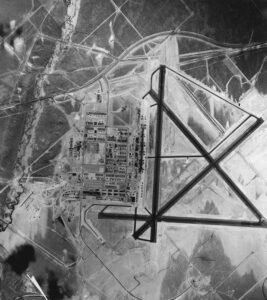
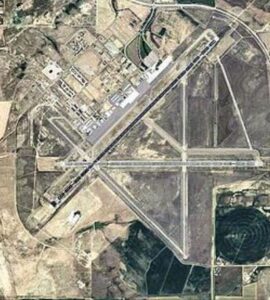 It’s hard to believe that the war my dad fought in was going on over 80 years ago. It’s also hard to believe that 80 years ago today, what is now known as Casper-Natrona County International Airport, was then known as the Casper Army Air Base. In fact, today, September 1, 1942, was the day that the “new” Army Air Base opened. The base was a training base, because as you will recall, World War II was not fought on American soil, although there was one balloon bombing incident that did reach American soil.
It’s hard to believe that the war my dad fought in was going on over 80 years ago. It’s also hard to believe that 80 years ago today, what is now known as Casper-Natrona County International Airport, was then known as the Casper Army Air Base. In fact, today, September 1, 1942, was the day that the “new” Army Air Base opened. The base was a training base, because as you will recall, World War II was not fought on American soil, although there was one balloon bombing incident that did reach American soil.
Over the years that the Casper Army Air Base was in use, over 16,000 bomber crew members were trained there. The Casper Army Air Base was one of many Army Air Force bases built during World War II. Training began a few months after the base opened. As a training hub, the base at one time had nearly 5,000 people living and working out of about 400 buildings. Many of the buildings from the old base stand today.
During the three years that the Casper Army Air Base was active, 140 Casper Army Air Base aviators died in 90 plane crashes. Of course, not all of the crashes were at the base. Most of the crashes were in Wyoming, but many occurred out of state when the fliers were on longer training flights. New crews arrived at Casper typically by train. Each crew consisted of two pilots, a navigator, a bombardier, a radioman, flight engineer, and four gunners. They immediately began a strict regimen of training. Pilot training was rigorous. The crews endured countless hours of advanced instruction in navigation, gunnery, bombing, armaments, flight engineering, and flying. They were also trained in aerial gunnery, air-to-ground gunnery, formation flying, night navigation, and of course, bombing. Joye Kading (longtime Casper Army Air Base secretary) remembered that Major General Hap Arnold once visited the base. She said, “He was so thrilled with this base and how it was operated and how careful it was, and how congenial all the people were that were working with one another.” That is truly how most people in Casper are, even today. Of course, you always find a few who don’t fit that description, but they are the rarity, and not the norm.
The base closed in 1945 and sat abandoned until the War Assets Administration turned the airfield over to civil 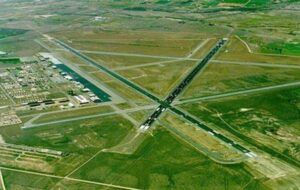
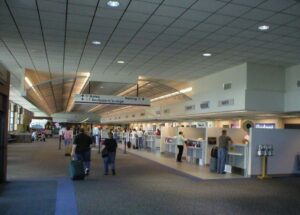 control in the late 1940s, and in 1949 it became Natrona County Municipal Airport. At that time, it replaced the former Casper Airport…Wardwell Field, whose runways are now streets in the town of Bar Nunn. On December 19, 2007, the name was changed to Casper-Natrona County International Airport. These days, approximately 35,000 flights go in and out of the airport every year.
control in the late 1940s, and in 1949 it became Natrona County Municipal Airport. At that time, it replaced the former Casper Airport…Wardwell Field, whose runways are now streets in the town of Bar Nunn. On December 19, 2007, the name was changed to Casper-Natrona County International Airport. These days, approximately 35,000 flights go in and out of the airport every year.

